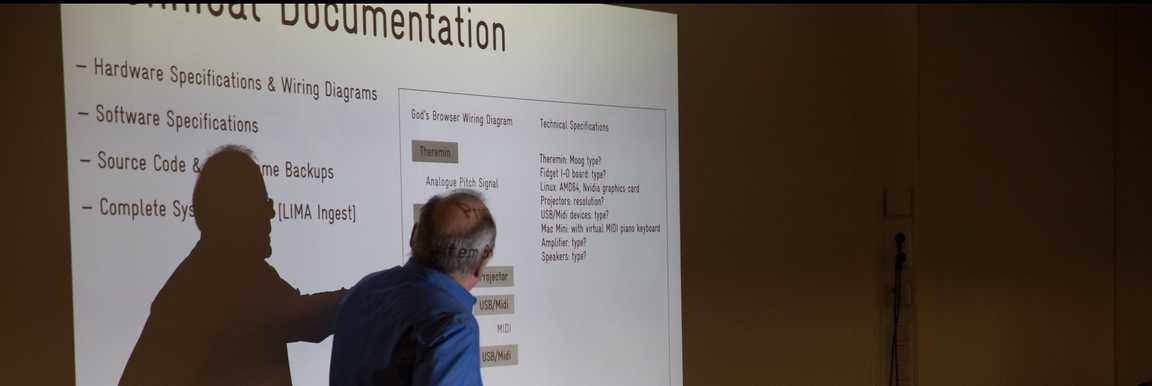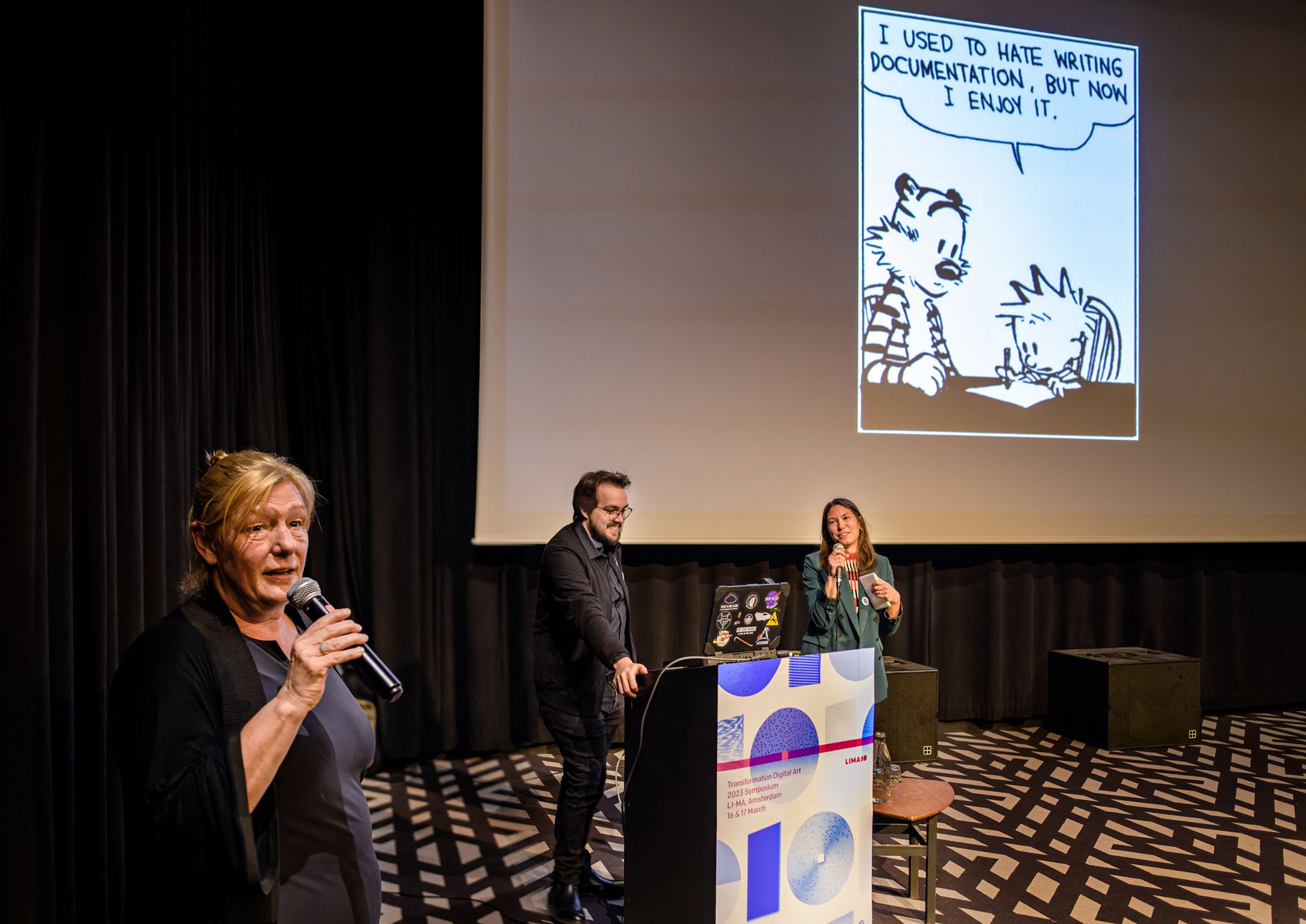
Documentation
The importance of documentation in art preservation, and LI-MA's documentation services
LI-MA preserves media art in order to safeguard it for the long term, and documentation is an important part of this. Documentation, for LI-MA, includes not only the work’s content, but also the compilation of essential source material that addresses a work’s historical context and technical specifications, which can be found in video registrations, literature, various configurations and technical manuals.
Toen en Nu (1990) - Geert Mul Registratie Schiedam. Prod. LI-MA
Documentation
Documentation can be oriented towards the past, often remaining after a work has been acquired, presented and experienced; or it can be future-oriented, consisting of documentation that forms the basis for a presentation, installation, reconstruction, or reinterpretation of a work. This is especially true for performances and NetArt but also for interactive, networked and live art works. The goal of preservation is to maintain an artwork in such a way that it is accessible to future generations while adhering to artist intention as closely as possible. Artist intention is an abstract notion that refers to an artist’s intent for a work at the time of creation. This can include characteristics that may potentially degrade or change with time, altering how an artwork is perceived and, if left unpreserved, potentially reaching a point at which an artist would no longer recognize the work as their own. Documentation maps the content, meaning, context, versions and iterations of a work as well as providing a description of any preservation actions taken. It can be in the form of text, video, screenshots, pictures, instruction manuals and even audience documentation. The comprehensive documentation of a work is of paramount importance when one wants to understand its significance and meaning well into the future.
What can LI-MA offer in terms of documentation?
LI-MA can provide and compile comprehensive documentation for your digital and performative artworks. This includes gathering documents related to a work’s acquisition, exhibition history, or meaning as well as creating condition reports, treatment proposals, registrations, or treatment reports. There are many different possibilities and ways to document. What needs to be documented and to what level of detail depends on the purpose of the documentation. For this, LI-MA offers guidelines that address the description of complex artworks and the creation of split-screen video documentation, which explores and records the functionality and interactivity of artworks. Equally important is the development of a platform and knowledge base that allows the sharing and reuse of this information. For this purpose LI-MA uses MediaWiki for its case study documentation and GitLab for version control.

Thorough and comprehensive documentation starts early, and should if possible be incorporated into the artistic process. To achieve this goal, LI-MA created the Artwork Documentation Tool. This tool supports artists, by providing step-by-step instructions on how they can document their own works. In this way artists can be in control of how their work is perceived and presented in the future by providing the essential content and context themselves.
LI-MA is always seeking to improve its practices by researching new methods for the documentation, transmission and preservation of media art, digital art and performances.
If you wish to enquire what LI-MA can do for you please contact us using the form below. Do you want to know what else LI-MA gets up to? Then use the buttons below to learn more.






